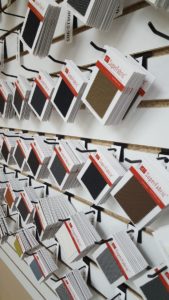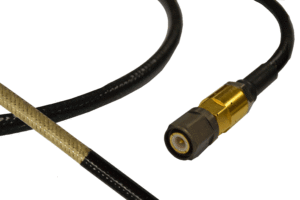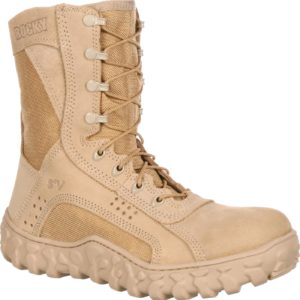IFAI Expo showcases the best of advanced textiles developments.

Walking the Advanced Textiles section of IFAI Expo in Charlotte this fall was a bit like touring a food market where an array of ingredients is on display, waiting for a chef to choose, combine them and create a dish whose value is above and beyond that of the separate parts. So it is with advanced textiles, where many of the ideas, which propel today’s high-tech industries, are developed.
While each new technology or component has its own specific properties, its successful commercialization requires the cooperative energies of a chain of developers, marketers and end users with the foresight to bring the various pieces together to create that breakthrough product. The advanced textiles area on the show floor generated that kind of energy, functioning as an “innovation incubator” for the technical textiles of tomorrow.
Advanced Textiles exhibitors at Expo included suppliers of fibers and fabrics, chemicals and electronics, coatings and finishes, membranes and laminates, and specialized equipment. Many stretch the scope of today’s textiles by making them lighter, safer, more comfortable, more durable or even conductive. While today these products may seem most appropriate for a mission to Mars, tomorrow some of them may become as ubiquitous as polyester.
The new (old) frontier

With the explosion of privately funded space exploration and NASA’s preparations for a potential manned mission to Mars in the 2030s, all eyes are once again on developing textiles and technologies for space. So, it was no surprise to find a crowd at the NASA exhibit, where Henry Tang, senior materials engineer for Aerodyne Industries at the Johnson Space Center, spoke about the need for materials that can withstand the Mars environment.
Tang explained that the mission would require structured materials for inflatables, as well as space suit materials with thermal insulation, dust resistance, and odor control. Long-term durability and flame resistance over the six to eight month flight, in a 30 percent-enriched oxygen environment, is also critical.
“Our challenge is unique,” Tang said. “We are not a retail outlet, and will not purchase a lot of materials. And our requirements are unique. Flame resistance has a different meaning to us, and textile technologies must be reliable and mature.”
New for protection and performance

Specialty chemical supplier Alexium, whose partnership with the U.S. Military resulted in the development of halogen-free Alexiflam™ FR treatment for the military’s nylon/cotton uniforms, has expanded its range of products to encompass automotive, outdoor fabric, plastics and bedding end uses, with some formulations now bromine-free.
The company is moving forward with all-in-one chemical formulations that combine a number of functions, such as flame resistance, phase-change cooling, and odor control. Alexium recently signed sales agreements to supply the multi-function formulation to two major producers of mattress ticking.
The Advanced Materials Segment of specialty chemicals supplier Lubrizol introduced a range of water-based polymer textile coatings offering improved comfort and durability. Applied to the inside of the fabric, a controlled, stretch coating creates areas of firmness in a stretch fabric, functioning as an alternative to separately sewn panels in compressive and supportive products. Lubrizol’s hydrophilic coating directs moisture from the inside of a textile to the outside.
“The polymer was developed as an alternative to waterproof breathable applications,” says Jack Scott, global applications manager for Lubrizol performance coatings. “It is not a DWR, but it will direct the movement of moisture from the inside out.” Scott described a third textile coating option as providing abrasion resistance and improved durability.
SuperFabric® materials, a product of Higher Dimension Materials Inc. (HDM), takes a more visual approach to high-performance, protective textiles. The armadillo-like product consists of tiny plates made from inert, eco-friendly materials that are printed onto a variety of base fabrics with a solvent-free epoxy. SuperFabrics are said to be durable, stain resistant, breathable, quick drying, and slash and abrasion resistant. A variety of customized patterns and colors are available; the product is being used in a number of applications by manufacturers of military gear, outdoor gear and footwear.
New fiber applications
Innovation in fiber configurations and applications continues to drive advanced textile development, particularly when it comes to conductive fibers for electronic textiles. Whether intended for aerospace or wearables, weight and flexibility are key factors.

Electro-Yarn from Marubeni America Corp. is a yarn created from polyester filaments coated with carbon nanotubes, creating a robust network of circuits allowing for high conductivity. Because the polyester is light and flexible, it has a high resistance to bend fatigue, and is lighter in weight than metallic cables.
Current applications include its use as a signal cable, wire or sensor, or weaving it into light-weight X-ray shielding fabric or quick-to-heat thermal textiles.
ARACON® metal-clad fibers from Micro-Coax are built on a base of high-strength DuPont KEVLAR® aramid. Originally developed for flexible braided microwave coaxial cables, ARACON fiber reduced the weight of the cables by 30 percent, and was quickly adopted by the aerospace industry for satellites.
Now available with silver, copper or nickel coatings, ARACON fibers have found additional applications in braided EMI shielding, or twisted into conductive wire for wearable electronics. Metal-clad ARACON products are strong and highly flexible, with thermal stability and chemical resistance.
The development and manufacturing of light-weight, high-strength composite materials for aerospace and other transportation industries is a growing market; and while all sorts of fibers are being incorporated, some 88 percent of

reinforcing materials are still being made from glass fibers. Vertical textile manufacturer Tweave LLC, owned by Gehring-Tricot Corp., works with glass yarns and roving to create flatbed weft knits and wovens to be inserted into composite materials.
Patrick Mack, director of research and development for Gehring-Tricot, says that the high modulus and stiffness of glass fibers is an advantage in composites. “It can be tricky to work with,” he adds.
“We are always looking at what’s next—burgeoning markets—and composites is certainly one of them. The idea is to take our deep knowledge of textiles and apply it to markets where it hasn’t been utilized,” Mack added.
IFAI Expo attracted over 5000 visitors and had a record number of exhibitors in the advanced textiles area.
Debra Cobb is a textiles expert and freelance writer editor based in North Carolina.
 TEXTILES.ORG
TEXTILES.ORG


